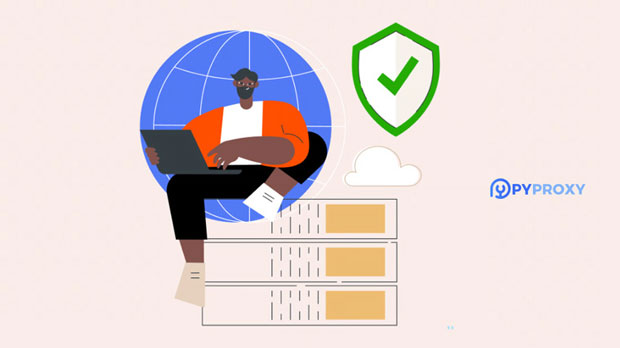When it comes to selecting a reliable proxy service, the debate often centers around the speed, stability, and overall performance of sock s5 proxies. Two well-known options in this space are PYPROXY and ASocks Proxy. Both of these services offer SOCKS5 proxies that can meet the needs of users looking for enhanced privacy, security, and faster internet access. However, when comparing PyProxy with ASocks Proxy in terms of speed and stability, key differences emerge. This article will delve into a deep comparison of these two services, evaluating their performance, features, and user experience to help you make an informed decision. Understanding SOCKS5 ProxiesBefore diving into the comparison of PyProxy and ASocks Proxy, it's important to understand what a socks5 proxy is and how it works. SOCKS5 is a type of internet protocol that allows clients to route their internet traffic through a proxy server. This type of proxy is known for its flexibility, offering support for a wide range of protocols such as HTTP, FTP, and TCP. SOCKS5 proxies provide greater anonymity compared to other types, as they do not modify data packets, allowing for a seamless internet experience.The primary benefit of using a SOCKS5 proxy is the ability to hide a user’s real IP address, preventing websites from tracking your browsing activities. Additionally, SOCKS5 proxies are less likely to be detected or blocked by websites, making them ideal for those looking to bypass geo-restrictions or avoid censorship.Speed Comparison: PyProxy vs ASocks ProxyOne of the most important factors when selecting a SOCKS5 proxy service is speed. The overall speed of the connection depends on various factors such as server location, network congestion, and the quality of the proxy infrastructure. Both PyProxy and ASocks Proxy offer services aimed at improving internet speeds, but they approach the task differently.PyProxy has gained a reputation for its fast and reliable performance. Users generally report low latency and high download speeds, making it ideal for activities such as streaming, gaming, and large file transfers. The company boasts a well-distributed network of servers around the globe, ensuring that users can connect to the nearest server for optimal speed. Additionally, PyProxy’s infrastructure is designed to handle a large volume of traffic, preventing slowdowns even during peak times.On the other hand, ASocks Proxy also offers a solid performance, but its speed may vary depending on the user’s location. While it can achieve fast connection speeds in some regions, users in other areas may experience slightly slower performance. However, ASocks Proxy has a reputation for stability in terms of speed over long periods, with fewer fluctuations compared to other proxy services. ASocks Proxy’s consistent speeds make it a viable choice for users who prioritize stability over raw speed.Stability of PyProxy vs ASocks ProxyWhile speed is essential, stability is equally crucial for a seamless internet experience. Stability refers to how well the proxy maintains its connection over time without frequent drops or interruptions.PyProxy is known for its high stability, with minimal server downtime and consistent performance even under heavy traffic conditions. Users often commend PyProxy for maintaining stable connections even during long browsing sessions or extended gaming hours. However, PyProxy’s stability can be impacted by network congestion or server issues, though these instances are rare and often quickly addressed by the service provider.ASocks Proxy, on the other hand, excels in providing stable connections. Even during high-demand periods, ASocks Proxy has a reputation for keeping its connections intact without frequent disconnections. This makes ASocks Proxy particularly attractive for users who need a reliable and steady connection for business or work-related tasks. While ASocks Proxy’s speed may not always be the fastest, its stability ensures that users can rely on it for prolonged use without interruptions.Ease of Use and FeaturesIn addition to speed and stability, the ease of use and available features also play a critical role in determining which proxy service is better suited for different users.PyProxy offers a user-friendly interface, with easy setup and integration options. It supports both residential and datacenter IPs, which provides flexibility depending on the user’s needs. PyProxy’s control panel is intuitive, allowing users to manage their proxies with ease and perform advanced configurations if necessary. It also offers several additional features, such as rotating IP addresses, which can be beneficial for users who need to avoid detection.ASocks Proxy is also user-friendly, with a simple installation process and a clean interface. However, ASocks Proxy places a greater emphasis on offering features tailored to those looking for stability. For instance, it provides detailed statistics and usage reports that help users monitor their proxy performance in real-time. Additionally, ASocks Proxy’s system is designed to automatically select the fastest available server, providing a hassle-free experience for users who don’t want to spend time manually adjusting settings.Security and AnonymityBoth PyProxy and ASocks Proxy prioritize security and anonymity, which are the main reasons users turn to SOCKS5 proxies in the first place. These proxies are designed to mask a user’s IP address, making it difficult for third parties to track browsing behavior.PyProxy is known for its strong security measures, including high encryption standards that ensure data is transmitted securely. It also offers protection against DNS leaks, which is a critical feature for those concerned with privacy. Additionally, PyProxy’s commitment to not logging user activity enhances its appeal to privacy-conscious users.ASocks Proxy, while also offering secure connections, places a strong emphasis on ensuring anonymity without compromising speed or stability. It employs advanced encryption techniques and has a no-logs policy, ensuring that user activity remains private. ASocks Proxy is particularly useful for users who prioritize privacy and wish to browse the internet without the fear of their data being exposed.Customer Support and ServiceWhen selecting a proxy service, customer support is an essential consideration. Both PyProxy and ASocks Proxy offer responsive support, but there are differences in the types of support they provide.PyProxy offers 24/7 customer service through multiple channels, including email, live chat, and a dedicated help center. Users report that PyProxy’s support team is knowledgeable and responsive, addressing issues in a timely manner. This makes PyProxy a reliable choice for users who may need assistance with setup or troubleshooting.ASocks Proxy also provides 24/7 customer support, with responsive proxies available through email and live chat. However, some users have reported that ASocks Proxy’s response times may be slower compared to PyProxy, especially during high-demand periods. Despite this, ASocks Proxy’s support is still generally reliable, ensuring that users can receive help when needed.ConclusionIn conclusion, both PyProxy and ASocks Proxy offer fast and stable SOCKS5 proxy services, but the choice ultimately depends on the user’s specific needs. PyProxy stands out for its speed, global server distribution, and user-friendly interface, making it a top choice for users who prioritize performance. On the other hand, ASocks Proxy excels in providing stable and reliable connections, making it ideal for users who value consistency and security.For those who prioritize raw speed and ease of use, PyProxy may be the better option. However, if stability, security, and privacy are paramount, ASocks Proxy offers a more reliable and steady experience. Ultimately, both services are excellent choices, and users should base their decision on which features matter most to their particular use case.
Aug 14, 2025



































































